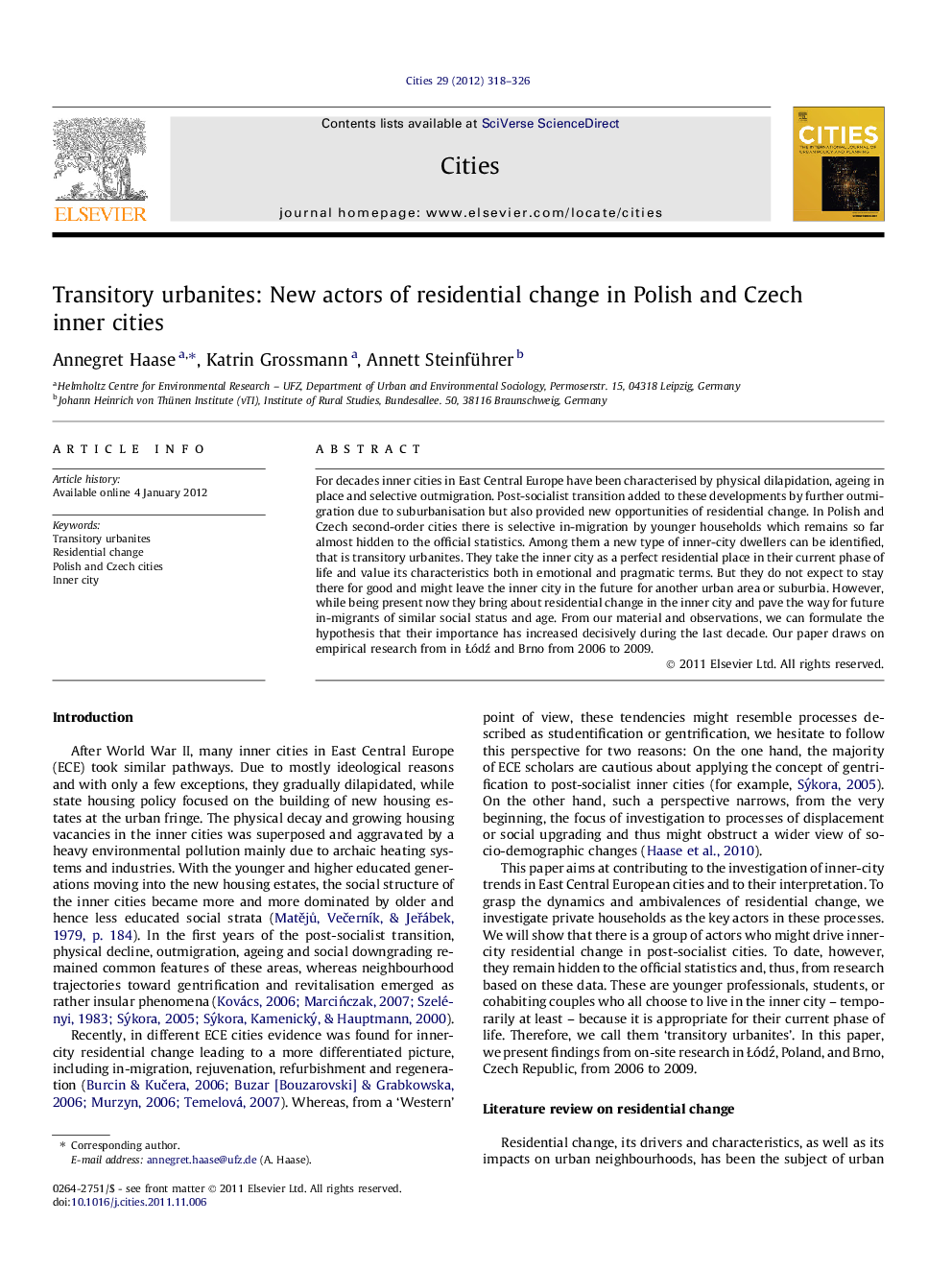| Article ID | Journal | Published Year | Pages | File Type |
|---|---|---|---|---|
| 1008636 | Cities | 2012 | 9 Pages |
For decades inner cities in East Central Europe have been characterised by physical dilapidation, ageing in place and selective outmigration. Post-socialist transition added to these developments by further outmigration due to suburbanisation but also provided new opportunities of residential change. In Polish and Czech second-order cities there is selective in-migration by younger households which remains so far almost hidden to the official statistics. Among them a new type of inner-city dwellers can be identified, that is transitory urbanites. They take the inner city as a perfect residential place in their current phase of life and value its characteristics both in emotional and pragmatic terms. But they do not expect to stay there for good and might leave the inner city in the future for another urban area or suburbia. However, while being present now they bring about residential change in the inner city and pave the way for future in-migrants of similar social status and age. From our material and observations, we can formulate the hypothesis that their importance has increased decisively during the last decade. Our paper draws on empirical research from in Łódź and Brno from 2006 to 2009.
► Transitory urbanites identified as recent in-migrants to the inner city of Łódź and Brno. ► They deliberately decided for inner-city housing, transform it as a place of residence. ► Newcomers typically have rental agreements and are highly mobile. ► Transitory housing coexists with older, long-term forms of housing in the inner city. ► Importance of transitory urbanites has increased decisively during last years.
